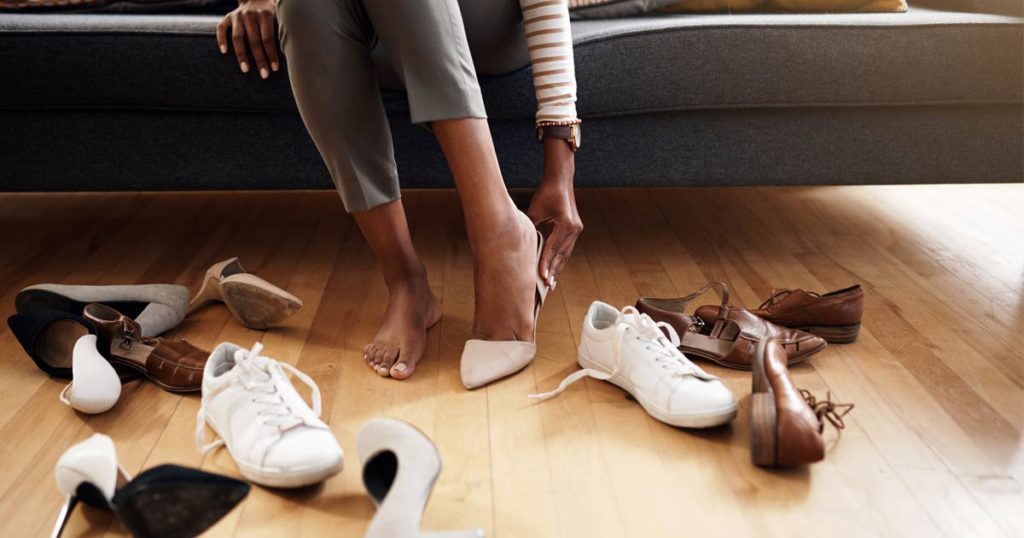Shoes can completely transform your outfit, it’s true, but did you know the right footwear can also provide relief from many common aches and pains? From foot pain to leg and back pain, choosing the right shoes can be a game changer when it comes to alleviating the pain from common ailments. Here are a few ways the right footwear may be able to provide some pain relief.
Tendonitis
We often talk about tendonitis—inflammation of the cords that attach muscle to bone—when it comes to tennis elbow and over-use of wrists. However, tendonitis can also occur in your feet, and is just as painful and difficult to treat. Fortunately, if you suffer from Achilles tendonitis, there are footwear solutions that can alleviate some of the pain.
The best shoes for achilles tendonitis provide support for the Achilles tendon and reduce the strain placed on these inflamed cords. There are also boots, similar to a ski boot, created specifically to provide relief for this condition.
Back Pain
Wearing the right shoes can also help with back pain—specifically lower back pain. It all has to do with the way you walk. First of all, well-fitting, supportive shoes can help improve posture, and we all know that poor posture is one of the leading causes of back pain. Shoes that have shock-absorbant features can also help lessen the blow of each step, preventing strain on our spine as it travels up our legs as we walk.
When it comes to dress shoes, it’s always best to opt for a lower heel if you’re concerned about back pain. Higher heels put strain on our hamstrings, which are attached to the lower back. High heels also cause our center of gravity to be displaced and even balance to be thrown off. Wearers often compensate in these shifts by leaning backward, causing strain on the back and leading to a curved spine.
If you’re the type of person who opts for flip flops instead of heels, you might think you’re in the clear, right? Think again. Flip flops are actually pretty bad for the back as well. They provide no support, leaving wearers unstable as the shoe “flips” and “flops” around. We compensate for that flip-flopping by walking in a way that’s unnatural, causing alignment issues in the lower back.
Plantar Fasciitis
Plantar Fasciitis, also known as “Policeman’s Heel,” is a condition where the tissue that connects the heel bone to the toes becomes inflamed. There are a few easy at-home remedies for managing and curing this ailment that include maintaining a healthy weight, applying ice, resting your feet in an elevated position, and—of course—wearing the right shoes.
For plantar fasciitis, support for your heel is incredibly important. As with back pain, flip-flops are a big no-no. Think thick soles and cushioning to prevent extra impact on your heel. And, make sure you replace your shoes regularly as the soles wear down.
Ingrown Toenails
A common yet extremely uncomfortable problem, ingrown toenails can plague people for years and are very difficult to cure at home. The only real cure is to have them treated with chemicals and lasers with a trusted podiatrist. If you’re working on treating them yourself at home or just simply don’t have the time or money to have them taken care of right away, the right footwear can seriously alleviate the pain and prevent ingrown toenails from getting worse.
Ingrown toenails are often caused by ill-fitting shoes to begin with, so if you find yourself with this issue out of nowhere, start by assessing your wardrobe and see where you can replace your footwear with more practical options. The best shoes for preventing and alleviating ingrown toenail pain are sandals or shoes with a wide toe area to prevent crowding.











